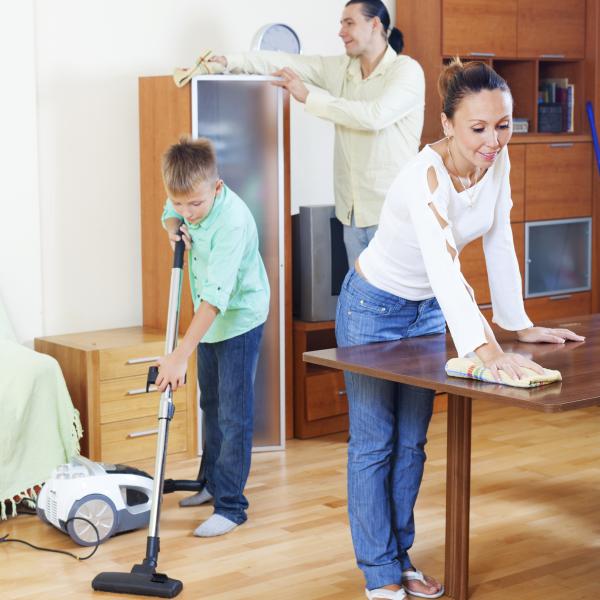
The clock just struck noon and you’ve officially been cleaning your house for 4 hours now. You’re sweaty and tired and you feel like you’ve just expended as much energy as you might have if you had gone to the gym. Knowing that you had planned to workout once you were done cleaning, you start to question if you really need to. After all, people say that housework is basically exercise in its own right. Can’t you just count your cleaning as your workout and move on with your day?
This brings us the question at hand; is housework considered exercise? All of us would probably want to answer this question with a resounding yes, but the answer is most likely no. In more recent years, public health messages have told us that almost any activity that keeps our bodies moving can be considered exercise; however, with the Centers for Disease Control and Prevention recommending adults get at least 150 minutes of moderate-intensity aerobic activity as well as muscle-strengthening activities at least 2 or more days each week, it’s important to note which types of exercises actually count toward this goal. Live Science suggests that instead of public health messages focusing on any type of activity, they should emphasize the importance of practicing different types of activities and ensuring that housework isn’t the sole type of exercise occurring.
While housework may get our heart rates up, questions about the type of work and intensity level can be raised. A study conducted at the University of Ulster analyzed 4,600 adults and found that of the 43% who stated they met recommended activity levels, 36% of them counted housework as their exercise. On top of this, researchers found that those who counted housework as part of their weekly activities tended to weigh more than those who chose other forms of exercise.
Why would this be the case? When we do chores around the house, we’re still moving around, getting our heart rates up and even breaking a sweat so it doesn’t make sense that those who count housework would weigh more, does it? Women’s Health and NY Daily News provide us with a few different theories as to why this could be happening:
Overestimating Activity Level – Since our heart rates are elevated while doing household chores, our activity level seems to be more intense than it is in reality. This perceived exertion leads to the assumption that housework alone is enough to meet the CDC activity recommendations, but that’s not true.
- Lower Calorie Burn – Along with the first point of activity level, there is a tendency for us to overestimate the number of calories that are burned while doing housework. Unfortunately, while calories are burned, it is not nearly enough to make up for calories that would be burned during more traditional exercise. For example, 30 minutes of vacuuming burns 130 calories, whereas 30 minutes of cycling burns about 400 calories. It’s the same amount of time, but the type of activity makes all the difference.
Snacking while Working –While doing household chores, snacks in the pantry and the refrigerator at our fingertips. Even though calories are being burned with each activity, we’re most likely negating this by snacking as we go.
Not Meeting Activity Recommendations – Women tended to report more time doing housework, but when researchers excluded it from their weekly activities, only 20% of them actually met the weekly recommendation.
The real key is to remember that even though housework may burn some calories and keep us somewhat active, it cannot be our only means of exercise. Our best bet is to still make it to the gym or head outside for a moderate to vigorous-intensity jog or bike ride at least a few times each week in addition to our weekly household chores.
Interested in learning more about how to measure exercise intensity? Click here for a great explanation from the Mayo Clinic.
